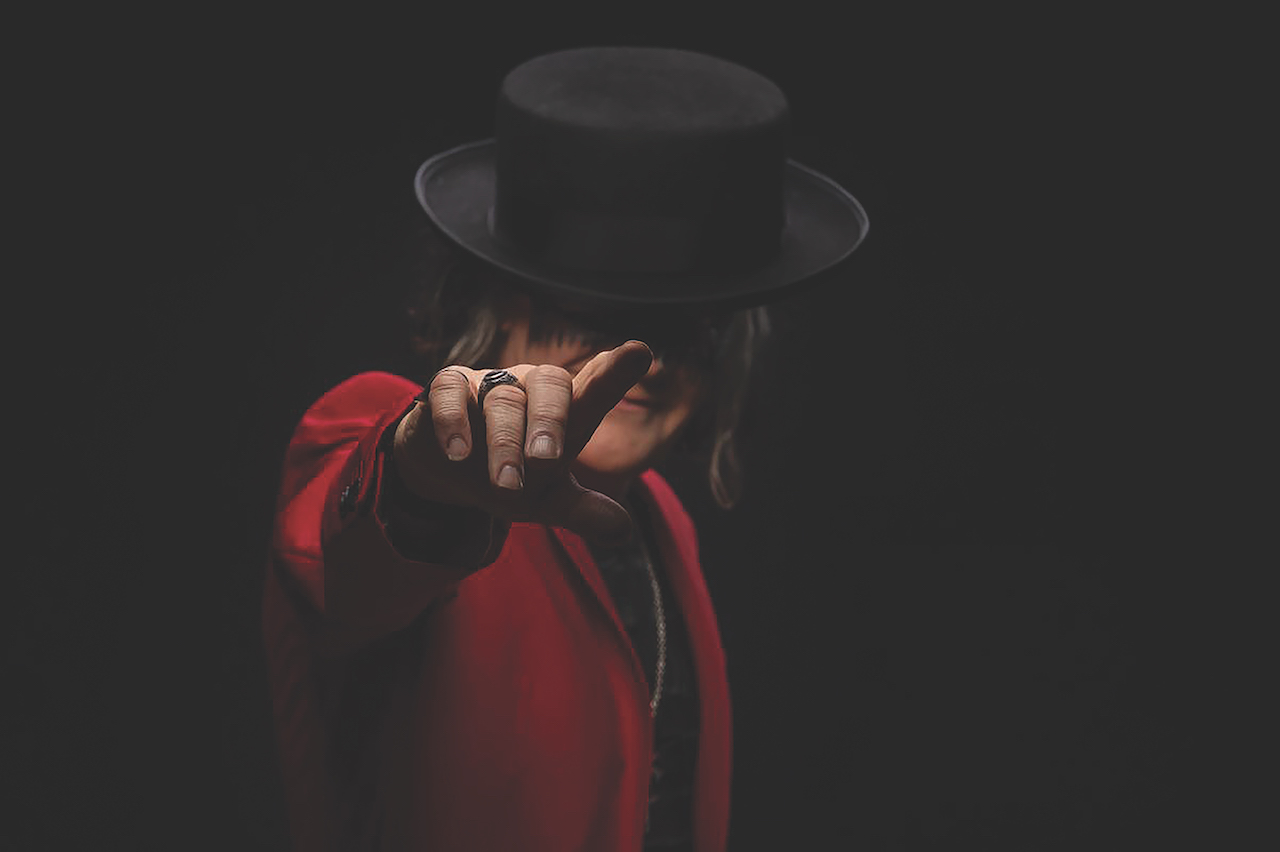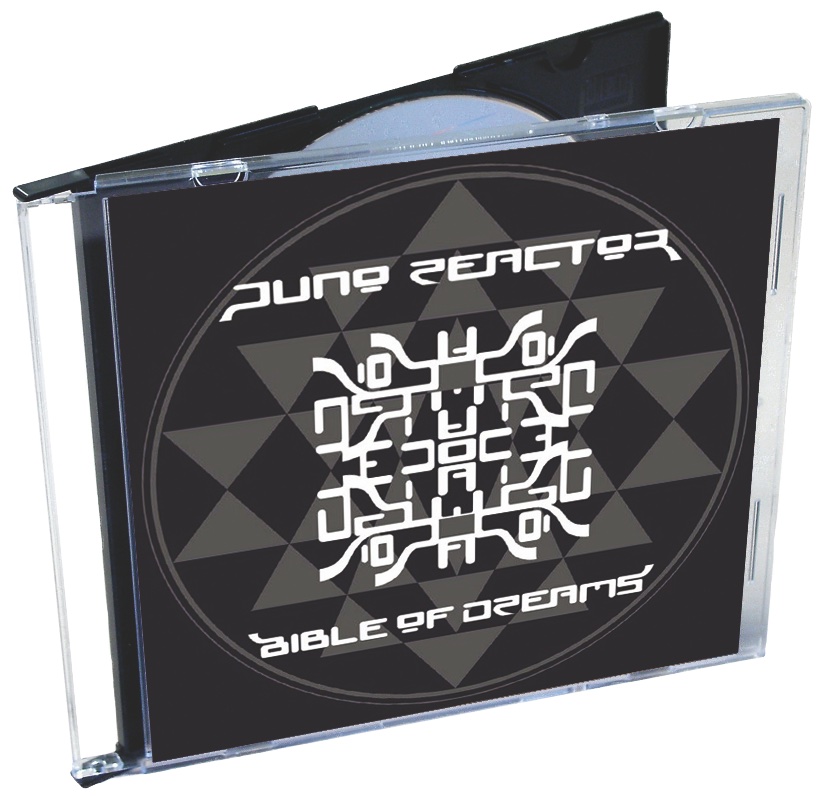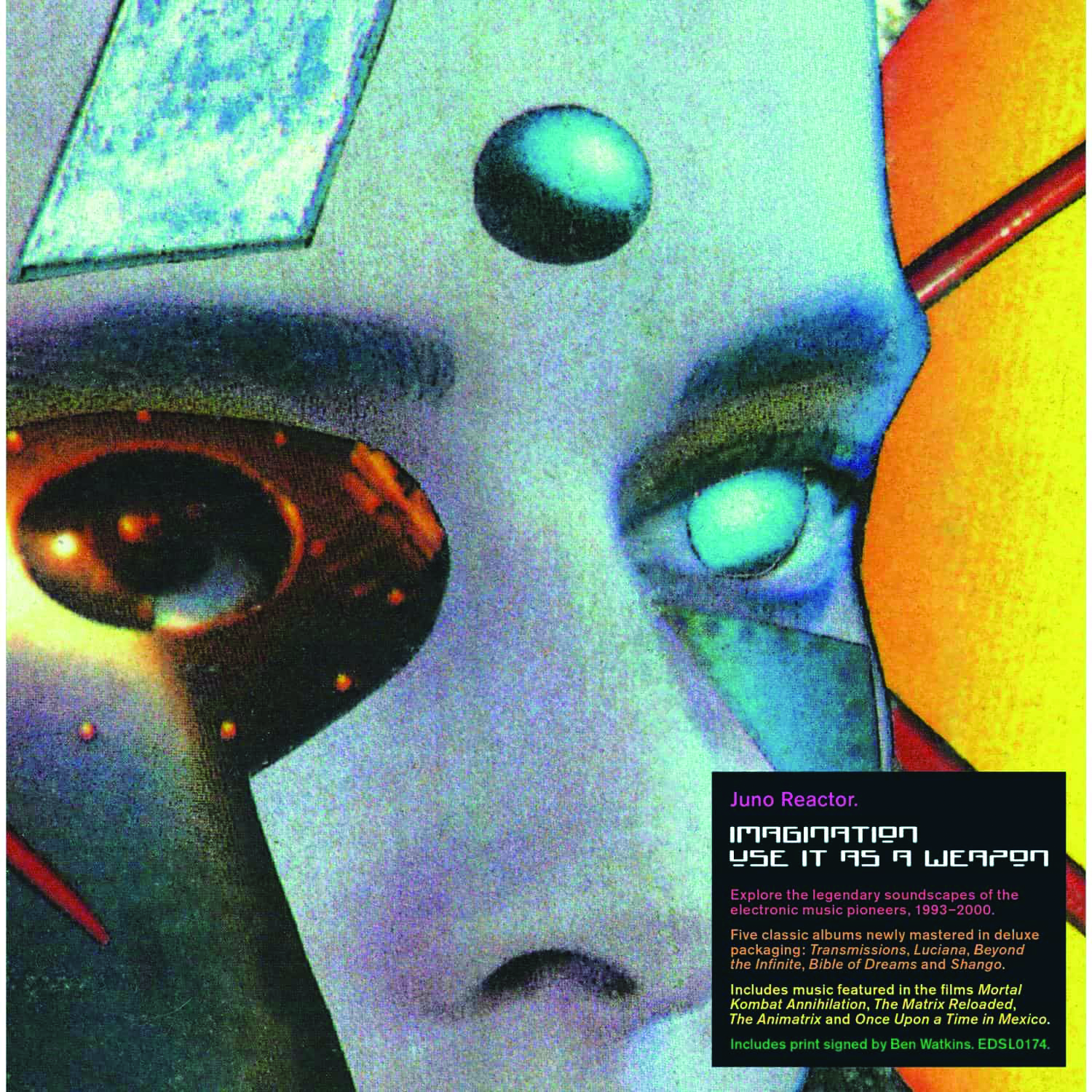Juno Reactor's Ben Watkins on the 1997 Goa trance classic Bible of Dreams: "What really gave the album its sound was the Raindirk Symphony desk. It was like another member of the band… suddenly we had a three-dimensional sound in the studio"
How the fusion of multiple genres and cultures helped inspire Juno Reactor's influential fourth album

Trance and techno pioneers Juno Reactor began life as a loose and lively art collective. Head honcho Ben Watkins fondly remembers the time he and his wife drove a surface-to-air missile past Big Ben as an anti Gulf War protest. As the ’90s soldiered on, he and his ever-evolving lineup focused more on the music, turning out three albums that pushed the envelope for the electronic music genre, before work began on their masterpiece – Bible Of Dreams.
The album was pieced together in Watkins’ Dickensian warehouse over by Shoreditch, a studio space made sonically perfect thanks to a recently installed system that was hand-crafted by sound expert (and now Watkins’ label boss) Robert Trunz.
“That changed it all,” Watkins says. “He put in a really big Raindirk Symphony desk, which is really quite specialised. Robert actually first started making desks for Deep Purple, and what he built rattled the whole building. “That desk was amazing. It had this really beautiful EQ. And when you pushed the bass end, it just purred at you. That made a massive impact on the music we could make, because suddenly we had a three-dimensional sound in the studio.”

Watkins began to create bass-heavy, 360° soundscapes, pulling live African percussion, Middle Eastern influences, live vocalists, rock guitars, and analogue drums into the mix. Developing themes across the album’s tracks were inspired by the concepts of dreams, death, religion and sharks, all while finding space for sampling actual Formula 1 racing cars, alongside dialogue snippets from movies including Ed Wood (1994) and The Ten Commandments (1956).
It would be deep-dive dance music, out on the fringes of the underground, with a shattering sense of tribal rhythm and an emotional depth unlike anything else on the scene at the time.
“It was around that time everyone started saying things like ‘Goa trance’,” says Watkins. “But, we didn’t really like those sort of pigeonholes. And we didn’t like the idea of being labelled. Me, [and band members] Mike [Maguire] and Stephen [Holweck] just didn’t want to have a blueprint. We just tried to make the music that we wanted to hear.”
In the studio with Ben Watkins

“My studio was like a huge warehouse over by Shoreditch. Robert Trunz came in and added a massive Raindirk Symphony desk and massive monitors with nine 12” bass drivers each side. We’d got rid of the Atari ST, and were on an early Macintosh tower, running everything through some sort of MIDI device. It was all Cubase. Like, 2.0. I’ve always used Cubase since the very beginning.
Want all the hottest music and gear news, reviews, deals, features and more, direct to your inbox? Sign up here.
“A lot was arranged in the computer, but we used to jam a lot on the desk. We had certain amounts of automation, but were always hands on deck, come the mix. I had a Korg MS-20, but my favourite was the Mono/Poly. Then a Roland MC-202, 303. The Korg DW-8000 and EX-8000. And we’d hire an Oberheim keyboard. But, generally, it was those things and samplers.
“I had a couple of Akai 1000s. Or, maybe a newer one? And some Oberheim Matrix 1000s. And we also had the Cyclosonic 3D panner, for spatial effects, and then 24-track tape machines.”
Bible of Dreams, track-by-track with Ben Watkins

Jardin De Cecile
“I’ve got this sort of imaginary musical cooker where I put ideas in when they’re just sounding a bit dodgy. I just chuck them in there and leave them until they’re ready for pulling out again and working on. This was one of those. I originally started the track with a guy called Xavier [Morel], who’s a DJ. And it was a pretty… well, it wasn’t that good.
“I think Xavier got taken to prison for six months, which sort of allowed him a bit of respite. And, in that time, I came across the story of this 18-year old French girl who was murdered by an English truck driver. And, when they found her body, the father wrote on a tree, ‘Jardin De Cecile’. Which means, ‘The Garden of Cecile’.
“I had just had my daughter around this time – in ’96 my daughter was born. And it really affects you, when you’ve just had a kid. Your emotional well is like, times 100. So it really affected me.
“After that, I thought, ‘Okay, let’s take this track out of the cooker, and manipulate it into like a sonic garden of Cecile. And that was the story behind it. And there are other writers on there as well [Mike Maguire and Paul Jackson].”
Conga Fury
“This features [South African conga king] Mabi Thobejane. He had a really big life story, and he was an amazing person to be around. When he was 17, he was out doing live shows with Duke Ellington, Miles Davis, and those sorts of artists.
“We met through Robert Trunz, who recorded him for his jazz label, M.E.L.T. 2000. He took me on a trip to Namibia, where we filmed and recorded the bush people, and spent another two weeks down in the desert.
“Mabia started telling me about how he wrote tracks. And it seemed very similar to the way I do, which is very much about images, or stories, and there’s always a fixed element to it. It’s not just about, ‘Oh, let’s have a good time’. And Conga Fury pretty much came out of that. We said, ‘Let’s do a song about the dreams of the Bushman or Sand People’.
“He was an amazing percussionist. And before that, percussion was like, things that white guys did, badly. Like T-Rex, and you know, people just sort of ‘seal-flapping’ on congas.”
God Is God/106
“I was working far more with real acoustic drums, at the time. We had Nick Burton on percussion and drum kit. He was great on this [track]. He’s a great drummer and had a rockabilly band called Westworld. But, he had great rhythmic sense. And he had really good electronic sense, as well. So, on things like God Is God, we’re very much working with him.
“This also features Natacha Atlas on vocals. She was a friend of Nick’s, because I think Nick was working with someone else from her band, Transglobal Underground. And he said, ‘Let’s get Natacha Atlas down’. And so she came down. And she really looked like Elizabeth Taylor. She looked beautiful. And she had a little wheelie bag, because she hadn’t got anywhere to live at the time. She was always going to different houses to stay in. So, she brought in her wheelie bag of everything she had. And then she came into the vocal booth, and it just sounded amazing.
“God Is God has been quite a transitional track for Juno Reactor, because of the much slower BPM difference as well. It was never a hit. But it, you know, like a lot of Juno’s stuff, spread through, in a sort of below-the-radar type of way.”
Komit
“I just remember working with Paul Jackson, who was one of the writers, and him being so precise on this track. It ended up taking a great deal of long nights to get this one done. It was OK, though. I mean, we had my studio in which Robert Trunz had installed this amazing gear. Stuff like a huge Raindirk Symphony desk, and monitors with all these bass drivers.
“He was CEO of M.E.L.T. 2000, which was the umbrella company which ran the Blue Room record label that put the album out, as well. We also had 24-track tape machines, so everything was going down to tape with the Cyclosonic 3D panner, which we used to have to hire in every day for like £100 or something. And then, when all of these sorts of panners became useless, I rang up FX Rentals and got one for like £120, and now they’re worth thousands!
“Like a lot of the tracks, this is like eight minutes long. I mean, I don’t know why writing tracks for that amount of time was so important to us. But, with the sort of longer tracks you got a better story. So, a lot of the thinking, in those days, was to have a longer intro. Then you’d get into it. Then you’d fire it up, and then hit a crescendo.”
Swamp Thing
“This is also Mabi, again, on percussion. And, I think I got my old mate Pete Glenister down on guitar. I did some guitars, too. Stephane [Holweck] is the bass player. And he played like electric bass on it as well. It’s all very ‘swampy’… ‘swampy rock’.
“I’ve always liked that sort of crossing over between dance and rock. Yeah, the first two albums we did are not really doing that. And [third album] Luciana, didn’t have it, either. Before I was working in Juno, I was in the band The Flowerpot Men. That was electronics and cello, voice, guitars. Then I was in Sunsonic, which was the extension of The Flowerpot Men, with acoustic instruments and electronics. So, I’ve always liked that. Because whether it’s singers or players, you just get so much more onto tape. You get an emotional content.”
Kaguya Hime
“Well, this is based on the stories from the Japanese folklore tales of the princess and the moon. And I had done a track called Samurai before [Hypnotic Records, 1996]. And Japan was really quite an important birthing pool for Juno Reactor.
“We did a lot of things there, way before we did anything outside. And that was a nod to them, really. And I liked the story. It has great percussion by Nick Burton, as well. I think it’s a lot of his knowledge as a drummer coming through, but I think it’s all pretty much electronic.
That desk was really amazing. When you pushed the bass end, it just purred at you
“It’s got a darkness to it. I think, maybe at times, I’m a bit Gothic. I sort of [insert] myself into that world quite easily. Although you don’t get that much Gothic stuff on Juno, but I quite like that darkness in tracks.
“And there’s a credit to Yapo. That was one of the guys in our family in Japan. And he did the voiceovers. I was always recording stuff. I’ve been doing that for years, just with a Zoom or tape recorders. I once recorded an Indian singer in a taxi.”
Children Of The Night
“That’s me and Johann [Bley]. And I remember thinking that I wanted to get Formula 1 cars recorded. So I went up to [UK racetrack] Silverstone, I think. I got an invite from, the Marlboro team [Ferrari]. And, I think at the time, Schumacher was racing for them. But the majority of the cars that I used were actually the Benetton ones.
“Besides the cars, I think there’s a bit of the Johnny Depp film, Ed Wood. So those had to give the record company a big task to get the licences through; all of this stuff. Like the Charlton Heston samples we used in God Is God from The Ten Commandments.”
Shark
“We just love sharks, and the protection of sharks. I mean, generally, the whole protection of the sea. The sea and the marine life, globally, has been quite a big thing for us. What really gave this track, and the whole album, its sound, was having such a great desk. I still love working on analogue desks now. Whether working with samplers or live percussion, it really added a new sound.
“It was like another member of the band, really. I think it gave us a big advantage over other bands. And I think that’s why the album still sounds okay now. We had great engineers as well. Greg Hunter was there. And there was Richard Edwards. They took tracks to a new level, you know?
“I could not have mixed them as well as they did. I’ve got proof, because I’ve got some of the mixes I did for demos. They taught me a lot about mixing. And there was mastering by Kevin Metcalfe. I’ve been working with him since the ’80s. The first record he mastered was David Bowie’s Hunky Dory, so we were in good hands.”
Juno Reactor box set and Bible of Dreams vinyl edition

Trance pioneers Juno Reactor have announced that that’ll release a 5CD box set, through Edsel Records, containing their first five landmark albums. Entitled Imagination, Use It as A Weapon, and retailing £35, each one comes with an exclusive art print, signed by Ben Watkins himself.
Meanwhile, the seminal Bible Of Dreams gets a standalone limited edition heavyweight double vinyl pressing release via Demon Records. Both will be available from March 15th, with more Juno Reactor releases and live shows planned for the rest of 2024.
For all the latest news on their mesmerising live shows and any new and forthcoming releases, head to the official website.






